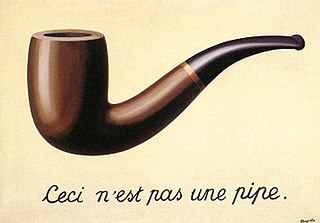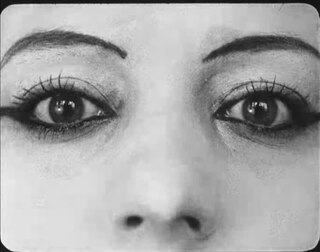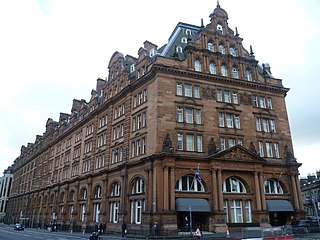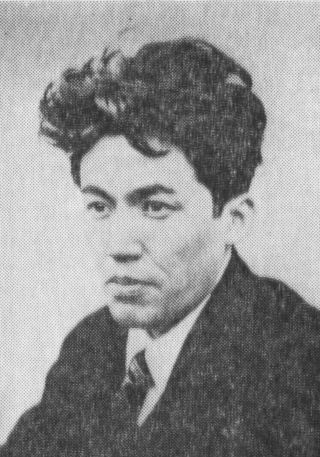
Modernism is a movement that attempts a radical break with previous ideas in art, literature, philosophy, culture, and social organization. It emphasizes experimentation, abstraction, and subjective experience across various disciplines. It emerged during the late 19th and early 20th centuries in response to significant changes in Western culture, including secularization and the growing importance of science. The movement was influenced by widespread technological innovation, industrialization, and urbanization, as well as the particular cultural and geopolitical shifts that occurred after World War I. Artistic movements and techniques associated with modernism include abstract art, stream of consciousness in literature, cinematic montage, atonal & twelve-tone music, and modern architecture.

Surrealism is an art and cultural movement that developed in Europe in the aftermath of World War I in which artists aimed to allow the unconscious mind to express itself, often resulting in the depiction of illogical or dreamlike scenes and ideas. Its intention was, according to leader André Breton, to "resolve the previously contradictory conditions of dream and reality into an absolute reality, a super-reality", or surreality. It produced works of painting, writing, theatre, filmmaking, photography, and other media as well.

COBRA or Cobra, often stylized as CoBrA, was a European avant-garde art group active from 1948 to 1951. The name was coined in 1948 by Christian Dotremont from the initials of the members' home countries' capital cities: Copenhagen (Co), Brussels (Br), Amsterdam (A).

Wifredo Óscar de la Concepción Lam y Castilla, better known as Wifredo Lam, was a Cuban artist who sought to portray and revive the enduring Afro-Cuban spirit and culture. Inspired by and in contact with some of the most renowned artists of the 20th century, including Pablo Picasso, Henri Matisse, Frida Kahlo and Diego Rivera, Lam melded his influences and created a unique style, which was ultimately characterized by the prominence of hybrid figures. This distinctive visual style of his also influences many artists. Though he was predominantly a painter, he also worked with sculpture, ceramics and printmaking in his later life.
The New York School was an informal group of American poets, painters, dancers, and musicians active in the 1950s and 1960s in New York City. They often drew inspiration from surrealism and the contemporary avant-garde art movements, in particular action painting, abstract expressionism, jazz, improvisational theater, experimental music, and the interaction of friends in the New York City art world's vanguard circle.

Experimental film or avant-garde cinema is a mode of filmmaking that rigorously re-evaluates cinematic conventions and explores non-narrative forms or alternatives to traditional narratives or methods of working. Many experimental films, particularly early ones, relate to arts in other disciplines: painting, dance, literature and poetry, or arise from research and development of new technical resources.

Sir Roland Algernon Penrose was an English artist, historian and poet. He was a major promoter and collector of modern art and an associate of the surrealists in the United Kingdom. During the Second World War he put his artistic skills to practical use as a teacher of camouflage.

Henryk Stażewski was a Polish painter, visual artist and writer. Stażewski has been described as the "father of the Polish avant-garde" and is considered a pivotal figure in the history of constructivism and geometric abstraction in Central and Eastern Europe. His career spanned seven decades and he was one of the few prominent Polish artists of the interwar period who remained active and gained further international recognition in the second half of the 20th century.

Princes Street Station was a mainline railway station which stood at the west end of Princes Street, in Edinburgh, Scotland, for almost 100 years. Temporary stations were opened in 1848 and 1870, with construction of the main station commencing in the 1890s. The station was closed completely in 1965 and largely demolished in 1969–70. Only its hotel remains, but it is no longer in railway ownership.

Tarō Okamoto was a Japanese artist, art theorist, and writer. He is particularly well known for his avant-garde paintings and public sculptures and murals, and for his theorization of traditional Japanese culture and avant-garde artistic practices.

Hiroshi Nakamura is a Japanese artist who has worked in 'reportage' and surrealist styles. Nakamura attended Nihon University and was involved in many artist groups and social movements such as the Zen’ei Bijutsu-kai and the Seinen Bijustuka Rengō. He is often associated with Reportage Painting, the movement that sought to report on the social issues that arose out of the postwar context by engaging first-hand with the local peoples and their struggles. His Suganaga No. 4 of 1955 exemplifies the concern and style of Reportage that is considered a major As postwar reconstruction of Japan progressed, Nakamura's interest in Reportage evolved into an interrogation of the artist's role in "viewing" the fundamentals of the political and social realms. Into the 1960s, in collaboration with Kōichi Tateishi, Nakamura devised the concept of Kankō geijutsu and, as an extension, he individually developed a painting style centering around trains and female students in uniform situated in an eerie surrealistic dream-like world. Among other influences, he was inspired by Sergei Eisenstein's montage theory and Akira Kurosawa's films which contributed to his signature distortion of perspective that he developed through his career.
Paul Păun, born Zaharia Herșcovici and who later in life changed his legal name to Zaharia Zaharia, also signed his work Paul Paon and Paul Paon Zaharia. He was a Romanian and Israeli avant-garde poet and visual artist, who wrote in Romanian and French and produced surrealist and abstract drawings. He was also a medical doctor and surgeon. His work is registered with the ADAGP and the SGDL.

Harue Koga was a Japanese avant-garde painter active from the 1910s to the early 1930s. He is considered to be one of the first and one of the most representative Japanese surrealist painters.
Josip Seissel was a Croatian architect and urban planner, who under the pseudonym of Jo Klek was a constructivist artist, graphical designer and theatrical designer. A member of the influential avant-garde Zenit movement of the 1920s, he is considered to be a pioneer of surrealism and abstract art in Croatia.

Sir William Oliphant Hutchison LLD PRSA was a Scottish portrait and landscape painter. He was an Honorary Member of the Royal Academy, President of the Royal Scottish Academy and a member of the Royal Society of Arts.
Julien Levy (1906–1981) was an art dealer and owner of Julien Levy Gallery in New York City, important as a venue for Surrealists, avant-garde artists, and American photographers in the 1930s and 1940s.

JoWonder, born Joanna Woodward, has a multidisciplined artistic practice, she is a British painter, avant-garde stopmotion animator, performance artist and writer. She is noted for being from a generation of British avant-garde animators such as Brothers Quay and David Anderson. They made/make work which brings concepts from postmodern literature, the surrealist movement, and contemporary art to cinema. Her films, which use collage, textured painting, and text, provide counterpoint between the metaphysical and the playful. Lilliputian characters are often introduced to an apocalyptic realm ruled by giants. Her work combines religious, political, fairy-tale, and scientific themes using satire and symbolism.

Edwin G Lucas was a Scottish Modernist artist. He was an amateur, self-taught apart from evening classes at Edinburgh College of Art, but during the period 1939-1952 he produced Surrealist works that are said to be unprecedented in Scottish art of the period.
Poetism was an artistic program in Czechoslovakia which belongs to the avant-garde; it has never spread abroad. It was invented by members of the avant-garde association Devětsil, mainly Vítězslav Nezval and Karel Teige. It is mainly known in the literature form, but it was also intended as a lifestyle. Its poems were apolitical, optimistic, emotional, and proletaristic, describing ordinary, real things and everyday life, dealing mainly with the present time. It uses no punctuation.
Yutaka Bitō was a Japanese artist closely associated with the postwar avant-garde art movement in Japan. In the 1950s, he was a leading exponent of the "reportage" style of Japanese socialist realist art, and later became known for his Surrealist paintings.














